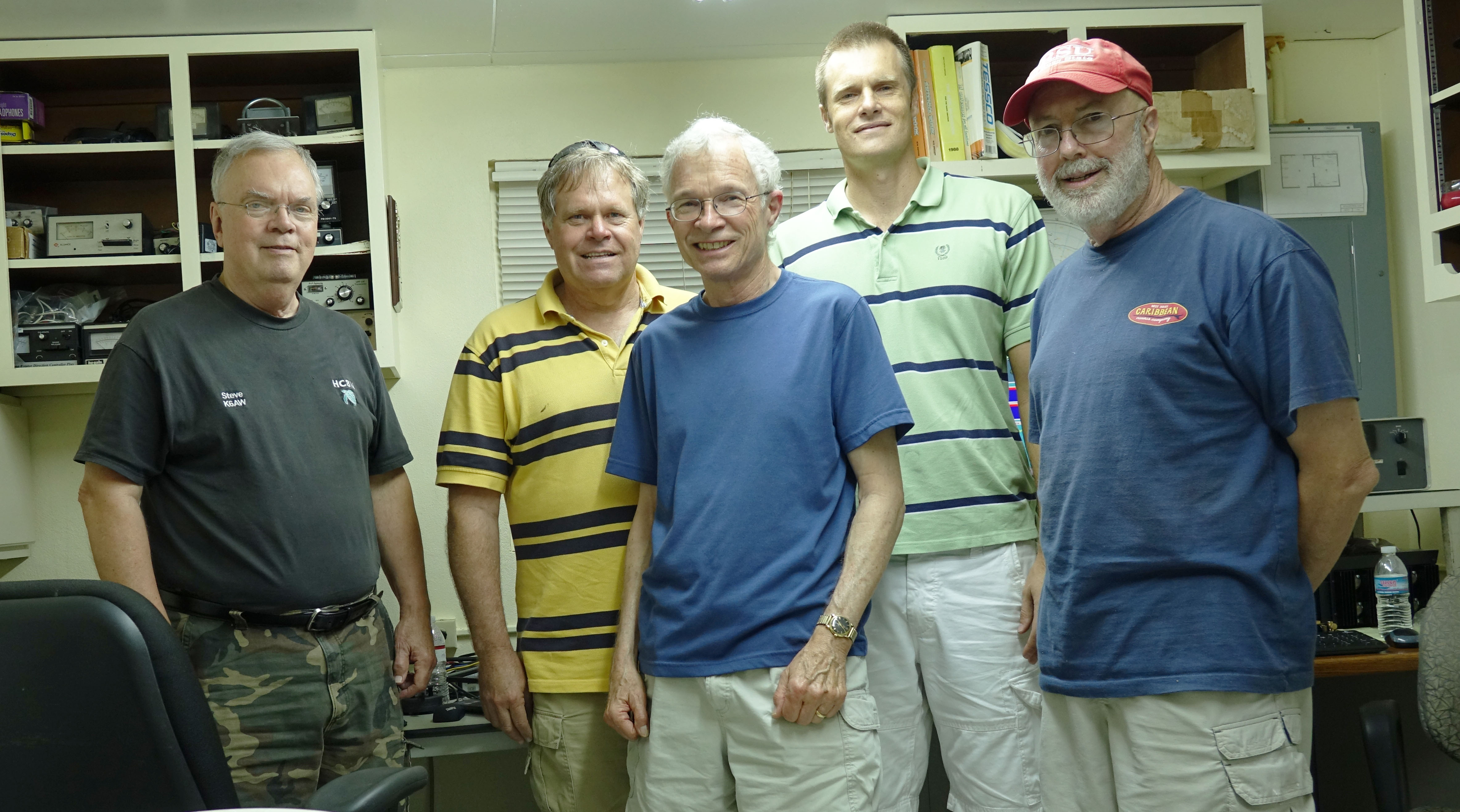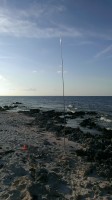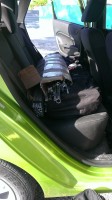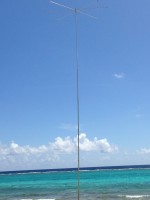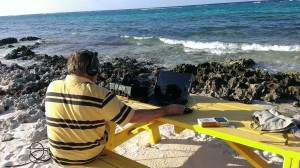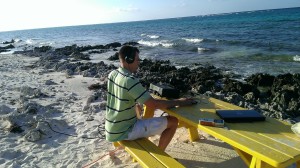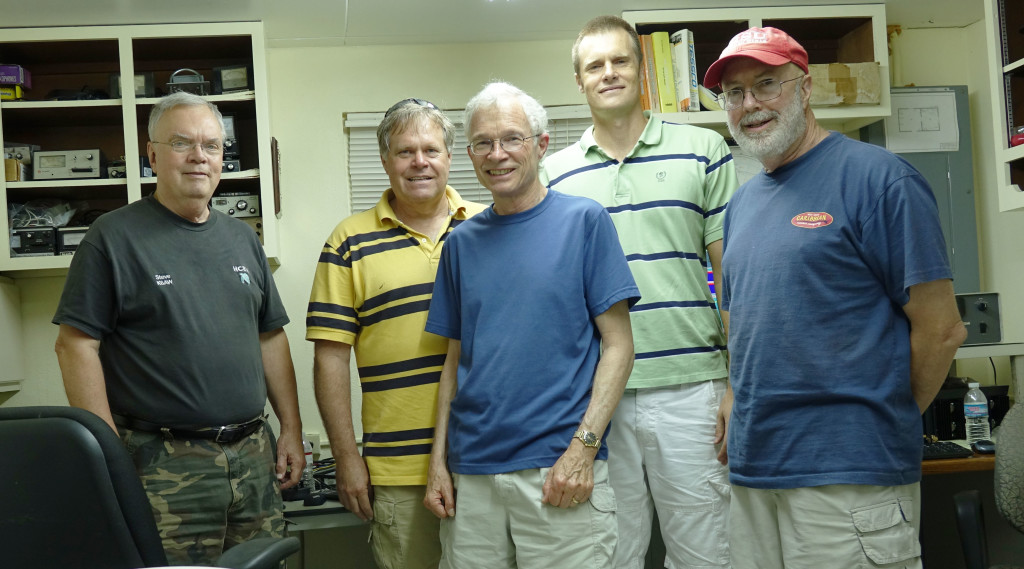
Anyone that has ever spent time with my dad knows that he flys by the seat of his pants. Needless to say the word “plan” is truly a four letter word to him. The same was true of our planned operation for the WPX CW contest. Initially we planned to do two separate single operator sites. I had scouted both locations and both seemed like great places to operate from (especially mine). However, after operating from my place on two different occasions before the start of the contest I decided that it would be to much work for each of us to setup an all band station on our own. So instead, we decided to do a multi single operation from the location I had planned to operate from. We knew that ZF1A would be stiff competition. Dave, N5DO, Steve, AC6T, and Steve, K6AW were planning a multi single operation from the ZF1A super station. Dave sent me an email about a month before the contest asking if we would be interested in joining them for a multi 2 operation. We declined because we had already committed to operating multi single together from the Northside QTH that had been generously offered by a ham friend. The idea of setting up verticals on a beach in a major contest was just to enticing to pass up.
F1 Designs, aka K5GO, made two 40 meter shortened verticals, two 15 meter verticals to be used as a driven element and a parasitic reflector, a 20 meter vertical and then a bunch of three foot pieces of aluminum tubing to be used for whatever we may have needed. To top it all off, he also brought enough tubing for me to build a 5 element 6 meter beam. We had everything needed to put together a formidable setup on the beach.
The Thursday before the contest I received an email from my dad saying that he had found an even better location at a public beach that had access to power. This new location was under a covered cabana, complete with a picnic table and restrooms. Not to mention a direct water shot to Africa, Europe, U.S. and Japan. I liked where we had planned to operate from mostly because it was secluded and was a very peaceful location. This new place, while it was a better location in terms of signals was not secluded and the wind was very strong. Despite this, we made the decision to change our plans and setup at the new public beach location. We were still a bit unsure about what the police or authorities might say so we went to the local police station to meet officer Bill. We explained our intention and got the o.k. from Mr. Bill. My daughter, Katie, asked why we changed plans at the last minute. It was a good question and one that I didn’t have the answer to, but it was typical of the just say no to a plan initiative that my dad has been following since the beginning of time. In fairness though, it was a joint decision.
Pre contest setup Thursday afternoon did not go well. K5GO was stressed out 15 minutes into the setup. It was difficult to find all of the tubing we needed mainly because of the large quantity of tubing that we had brought with us. Sometimes less is more, and this was one of those times. After a couple of hours a 15 meter vertical was erected about 40 feet from the water’s edge. The cabana was located about 150′ from the water so we were restricted by the 100′ coax that we had to use. It was late in the day on 15 meters, probably around 5:30 local time, but we were hearing lots of Europeans and got a true 599 signal report running 100 watts from an EU station. We quickly got a 20 meter vertical erected and that band sounded good as well. Dinner was served at 7:00 so I gave my dad his marching orders for the next day which was to preassemble additional verticals and lay out the radial field for the 40 meter vertical. We were both very tired and it was not an enjoyable experience.
Friday, the day of the contest, I slaved away at work while K5GO continued setup at the beach. I had sent Dave, N5DO, an email telling him that we would be running low power instead of high power. Messing with an amplifier was just to much to ask at this point and we wanted to keep everything as simple as possible. Dave responded and said that we would still be stiff competition for them even though they would have at least a 10 dB advantage on us due to the difference in power.
Updates from K5GO were good and he was able to erect the 40 meter vertical in short order. It probably helped that I wasn’t around giving him dirty looks and sending nasty thoughts his way! Actually the 40 meter vertical was nicely packed and all of the parts were together so setup was quite easy and straight forward. Around 10:00 A.M. I received a call from N5DO. He again extended the invitation for us to join them and operate in the multi 2 category. We agreed to join them. The stress of the previous days setup along with concerns about security on the public beach for 48 hours, and creature comforts made the decision easy for both of us. While the dream of operating field day style from the beach was alluring the reality was just to difficult to implement. Especially when we had the invitation to operate from a great contest station. My dad packed the ZF2DX/P contest station into the back of his car and at 4:00 p.m. local time we joined the other ZF1A team members for some precontest strategy.
We met the guys and an operating schedule was developed.
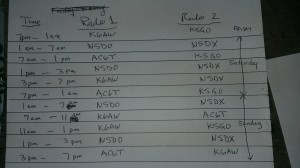
The only thing needed was an 80 meter antenna. Fortunately, the station already had a 60 meter inverted vee that we could easily turn into an 80 meter antenna. Rates were not spectacular but they were certainly consistent throughout the contest. 15, 20, and 40 meters were the place to be with extremely loud signals into ZF from Europe and the U.S. Being in North America we are at a huge disadvantage in terms of points per contact into the U.S. Our competition in South America would be getting 3 points vs. our 2 points for every U.S. contact on 10, 15, and 20 meters. On 40 and 80 meters they
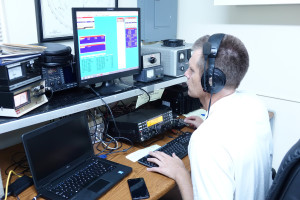
would get 6 points vs our 4 points for each U.S. contact. We would be at a big disadvantage on 10 and 15 meters as compared to the multi two operations in South America. However, we hoped we hoped that our advantage on 20, 40, and 80 meters would equalize our 10 and 15 meter disadvantage. The contest went quite smoothly and apart from a networking problem between the two computers we did not encounter any problems. PS2T was posting their score to the live score site and we watched their score intently throughout. After the first 12 hours of the contest, we had a 2 million point lead on them. However, 10 and 20 meters were dead from sunrise until around 3:00 p.m. local time. During this time PS2T clawed their way back into a virtual tie with us after 24 hours. They clearly had an advantage on 10 meters as they could hear and were being heard all over Europe and U.S. 10 was very spotty for us and we never really got anything going other than short 10 minute bursts of weak EU or U.S. We again built our lead up to over two million points after the second night. Clearly we were doing well on 20, 40, and even 80 meters where we were able to eek out nearly 200 contacts with almost all of them coming on the second night. The updated score posts from PS2T stopped Sunday morning. I have no idea why they stopped posting but I figured that we would end up in a tie with them at the end of the contest. 20 and 10 meters were even worse the second day but somehow our team kept plugging away and it looks like we ended up winning the Multi 2 category for the entire world!
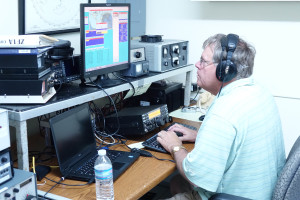
The contest ended for K5GO and myself at 3:00 p.m. with the conclusion of our last operating shift. With four hours remaining in the contest, we came back to my apartment to relax for a bit. Neither of us really like to relax so instead of sitting around we decided to make the 45 minute drive to the north part of the island to resurrect the ZF2DX/P beach front contest QTH. One of our main goals was to see just how well a vertical on the water would work. Looking at the Reverse Beacon Network spots would give as a good indication of how loud we were as compared to the ZF1A station. Because of the power difference, anything within 10 dB would mean that we were as loud or louder when the power factor was taken out of the equation. A few examples from 15 meters.
| Receive Station | ZF2DX Signal dB | ZF1A Signal dB |
|---|---|---|
| GW8IZR | 17 | 21 |
| EA4TX | 22 | 24 |
| DR1A | 12 | 18 |
| W3LPL | 16 | 16 |
| N6TR | 27 | 21 |
| KH6LC | 10 | 8 |
ZF1A had their beam pointed at EU during this experiment. Clearly the single elevated vertical on the beach was working quite well in ALL directions. In a worldwide DX contest, like the WPX, it is important to be loud everywhere. In the directions where the ZF1A beam was not pointed we were as loud or in some cases louder while running only 100 watts. It would have been relatively easy to put up a parasitic reflector which would have given us close to another 5 dB while still maintaining a large enough beamwidth to encompass EU and the U.S. Signals at the beach were very loud, just as they were at ZF1A. Our quick operation was a nice way to end a very enjoyable weekend. Thanks to Dave and the two Steves for inviting us to operate with them. And of course thanks to our great host Andrew, ZF1EJ for the use of his amazing station.
